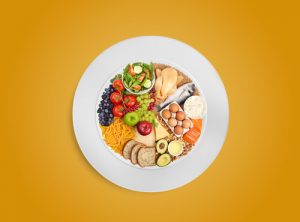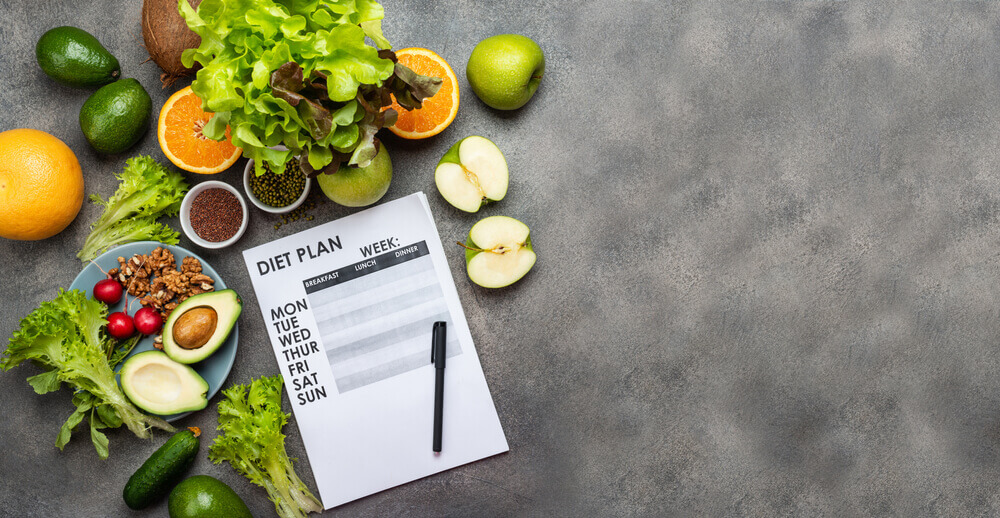Health, wellness, and self-care are at the forefront of most women’s minds, and having a well-balanced diet plan plays a significant role in achieving these goals. As women, our nutritional needs evolve with each stage of life, and it’s essential to understand and adapt to these changes. That’s where our curated diet plans come into the picture. Designed specifically for women, these plans are more than just a list of foods to consume; they’re comprehensive, scientifically-backed strategies to help you fuel your body, mind, and soul. Whether you’re looking to shed a few pounds, boost your energy, manage a health condition, or simply invest in your overall wellness, our tailored diet plans for women can guide you on this life-enhancing journey.
Understanding the Benefits of Dieting for Women
Adopting a well-balanced diet plan presents numerous benefits for women, regardless of age, lifestyle, or health status. Here are some key advantages:
- Weight Management: A well-structured diet plan can help manage weight effectively. Promoting healthier food choices and portion control can assist in weight loss and maintenance, reducing the risk of obesity-related conditions.
- Improved Nutrient Food Intake: Tailored diet plans for women ensure they are getting a balanced range of essential nutrients, from vitamins and minerals to protein, fiber, and healthy fats. This is crucial for overall health, vitality, and specific functions like bone health and immune function.
- Menstrual Health: Diet programs rich in iron and other nutrients can help mitigate menstrual issues like excessive bleeding or anemia, which some women experience.
- Bone Health: A diet rich in calcium and vitamin D can help reduce the risk of osteoporosis, a condition that disproportionately affects postmenopausal women.
- Pregnancy and Breastfeeding: For those in their childbearing years, a nutrient-rich diet is crucial for fertility and maintaining a healthy pregnancy, and providing optimal nutrition during breastfeeding.
- Disease Prevention: A balanced diet can help prevent chronic diseases such as heart disease, stroke, diabetes, and certain cancers.
- Mental Well-being: Good nutrition can support mental health by stabilizing energy levels and mood. Some research suggests a healthy diet may even help alleviate symptoms of depression and anxiety.
- Energy Levels and Mood: Consuming a balanced variety of foods can stabilize blood sugar levels and prevent energy spikes and crashes. This can lead to improved mood and increased energy throughout the day.
- Aging Gracefully: A nutrient-rich diet can help skin stay healthy and youthful, slow aging, and support eye health.
Remember, though, that a diet plan is not a one-size-fits-all solution. It should be tailored to nutritional needs, health goals, and lifestyle factors.
Exploring Different Types of Diets and Their Pros & Cons
There are numerous types of diets that people follow for other health, wellness, and lifestyle reasons. Here are a few common diets, along with their pros and cons:
 Mediterranean Diet
Mediterranean Diet
- Pros: Known for heart health benefits, the Mediterranean diet emphasizes fruits, vegetables, lean proteins, whole grains, and healthy fats, particularly olive oil. It’s backed by extensive research showing a reduced risk of chronic diseases.
- Cons: Some may find it challenging to source certain ingredients like fresh fish and high-quality olive oil, especially if they live in areas where these are not locally available or affordable.
Ketogenic (Keto) Diet
- Pros: A low-carb, high-fat diet that forces the body into ketosis, burning body fat for energy instead of carbs. It’s often used to lose weight, and there’s some evidence it may help with certain neurological conditions.
- Cons: It can be challenging to follow, with potential side effects like ‘keto flu’ initially. Long-term adherence can lead to nutrient deficiencies. It may also increase the risk of heart disease due to high saturated fat intake.
Paleolithic (Paleo) Diet
- Pros: Emphasizes whole, healthy foods, lean proteins, fruits, vegetables, and nuts, mirroring the weight loss diet of early humans. This may lead to weight loss and improved blood sugar control.
- Cons: It can be restrictive, cutting out entire food groups like dairy and grains, which might lead to nutrient deficiencies. It can also be more expensive due to a heavy emphasis on lean meats.
Vegetarian/Vegan Diets
- Pros: Typically low in saturated fat and high in fiber, which can benefit heart health. Vegetarian and vegan diets are also more environmentally friendly and ethical concerning animal welfare.
- Cons: This can lead to nutrient deficiencies like vitamin B12, iron, and omega-3 fatty acids if not properly planned. It can also be challenging to find suitable plant-based options when eating out.
Intermittent Fasting
- Pros: It may promote weight loss, improve metabolic health, and even extend lifespan, according to some research. Several methods are making it adaptable to individual schedules.
- Cons: It may be challenging to stick to, especially for those used to frequent meals or snacks. It can lead to overeating during ‘eating windows’ and may not be suitable for those with certain medical conditions.
DASH Diet
- Pros: Originally developed to lower blood pressure, DASH emphasizes fruits, vegetables, whole grains, lean proteins, and low-fat dairy. It has been associated with a reduced risk of several diseases.
- Cons: Requires careful food tracking and planning. Eating out might be challenging due to the high sodium content in restaurant foods.
There are also many other weight loss meal plans for women that focus on various aspects of health and wellness. Here are a few examples:
- Low-FODMAP Diet: Designed for people with irritable bowel syndrome (IBS), this diet restricts certain types of carbohydrates that can cause digestive distress. It has been shown to reduce symptoms in many people with IBS.
- Gluten-Free Diet: Necessary for people with celiac disease, non-celiac gluten sensitivity, or wheat allergy, this diet excludes all foods containing gluten, a protein found in wheat, barley, and rye.
- Low-Carb Diet: There are many versions of the low-carb diet other than keto, such as Atkins and South Beach diets. They all limit carbohydrate intake in favor of proteins and fats.
 Weight Watchers (WW): This program uses a point system to encourage healthy habits and sustainable eating patterns. It’s been popular for many years and is backed by scientific research.
Weight Watchers (WW): This program uses a point system to encourage healthy habits and sustainable eating patterns. It’s been popular for many years and is backed by scientific research.- Whole30: This is a 30-day plan that emphasizes whole foods and eliminates sugar, alcohol, grains, legumes, soy, and dairy. It’s intended as a sort of nutritional reset to help identify foods that might be causing negative health effects.
- The Zone Diet: This diet aims to reduce inflammation in the body by balancing macronutrients in specific proportions (40% carbohydrates, 30% proteins, and 30% fats).
- Flexitarian Diet: This semi-vegetarian diet allows occasional meat or fish but focuses mainly on plant foods. It aims to offer the health benefits of a vegetarian diet without being overly restrictive.
- The Volumetrics Diet: This diet focuses on eating high-volume, low-calorie foods to feel full and satisfied while losing weight.
These diets can all be tailored to women’s specific needs. However, it’s crucial to consult with a healthcare provider or dietitian before starting any new diet plan to ensure it is safe and appropriate for individual health needs and goals.
Customized Nutrition Plan That Works for You
Creating a customized nutrition plan can greatly benefit your health, but it can also seem a bit daunting. Here are some steps to get you started:
1. Understand Your Goals: The first step is to understand what you want to achieve. This could be weight loss, muscle gain, improved energy, better heart health, or managing a chronic condition like diabetes.
2. Evaluate Your Current Diet: Keep a food diary for a few days or a week. This will help you understand your current eating habits, identify areas for improvement, and see how well your current diet aligns with your goals.
3. Calculate Your Nutrient Needs: Depending on your goals, you must calculate how many calories you need each day and how those calories should be split between macronutrients (protein, carbohydrates, and fats). Many online calculators and apps can assist with this, but a registered dietitian can provide the most accurate and personalized advice.
4. Plan Your Meals and Snacks: Based on your nutrient needs, start planning meals and snacks that meet your calorie and macronutrient targets. This should include a variety of foods to ensure you’re also meeting your micronutrient (vitamins and minerals) needs.
5. Incorporate Foods You Enjoy: A diet plan will only work if you stick to it. Make sure your plan includes foods you enjoy eating. If you hate broccoli, for example, don’t force yourself to eat it. Find other green vegetables you like instead.
6. Prep Your Food: Meal prep can help you stick to your plan. This could be as simple as chopping vegetables in advance or as complex as cooking all your meals for the week in one day.
7. Monitor Your Progress: Regularly reassess your progress towards your goals and adjust as needed. This might mean tweaking your calorie intake, adjusting your macronutrient split, or trying new foods or recipes.
8. Seek Professional Advice: While it’s possible to do all of this on your own, getting advice from a registered dietitian can be very helpful. They can provide personalized advice, help you navigate challenges, and provide support and accountability.
Planning Ahead with Dieting
Meal Preparation:
 Plan Ahead: Take some time each week to plan your meals. This saves time and stress during the week and helps ensure your meals align with your nutritional goals.
Plan Ahead: Take some time each week to plan your meals. This saves time and stress during the week and helps ensure your meals align with your nutritional goals.- Batch Cook: Prepare large quantities of food that can be used in multiple meals throughout the week. For instance, grill several chicken breasts at once, or make a large pot of quinoa to use in salads, stir-fries, or side dishes.
- Use Freezer-Friendly Recipes: Making dishes that freeze well can provide quick, healthy options on busy nights.
- Prep Components: Wash, chop, and store fresh fruit varieties and veggies right after shopping. Cook grains, proteins, and other meal components in advance.
- Invest in Good Storage Containers: Having a variety of sizes and types can help you store prepped ingredients and leftovers safely and conveniently.
Grocery Shopping:
- Make a List: Based on your meal plan, make a list and stick to it. This can help you avoid impulse purchases that might not align with your nutrition plan.
- Shop the Perimeter: Most grocery stores keep fresh foods like produce, meat, and dairy on the outside aisles. Processed foods tend to be in the middle aisles.
- Read Labels: Learn to understand nutrition labels and ingredient lists to make healthier choices.
- Buy in Bulk: Items like grains, nuts, seeds, and spices are often cheaper in bulk.
Staying Motivated:
- Set Clear, Achievable Goals: Having a clear goal can help keep you motivated. Make sure your plan is realistic and achievable.
- Find a Support System: Whether it’s a friend, family member, or online community, having others who support your goals can be hugely motivating.
- Celebrate Small Wins: Did you eat veggies at every meal today? Celebrate! Did you choose a piece of fruit over a candy bar for a snack? Celebrate!
- Be Patient: Changing dietary habits takes time. Don’t get discouraged if progress seems slow.
Setting Goals:
- Make Them Specific: Instead of “eat healthier,” set a goal like “eat five servings of vegetables daily.”
- Ensure They’re Measurable: Goals should be quantifiable so that you can track your progress.
- Keep Them Achievable: Setting too lofty or unrealistic goals can lead to discouragement and loss of motivation.
- Ensure They’re Relevant: Your goals should align with your broader lifestyle and health objectives.
- Set a Time Frame: Goals should have a timeline that creates a sense of urgency but is still realistic and achievable.
Remember, everyone has their unique journey towards better health and nutrition. Finding a balance and strategies that work for you in your current lifestyle and circumstances is important.
References:
https://www.eatforhealth.gov.au/food-essentials/how-much-do-we-need-each-day/sample-meal-plan-women
https://www.healthline.com/nutrition/best-weight-loss-meal-plans-for-women
https://www.medicalnewstoday.com/articles/weight-loss-meal-plan
https://www.womenshealth.gov/healthy-eating/how-eat-health/healthy-eating-plan-women
https://www.goodhousekeeping.com/health/diet-nutrition/g4351/1200-calorie-diet-plan/
https://www.womenshealthmag.com/weight-loss/a19934129/best-diet-plan-for-weight-loss/
https://www.forbes.com/health/body/weight-loss-plans-for-women/
https://www.verywellfit.com/easy-weight-loss-meal-plans-3495471
https://www.muscleandfitness.com/muscle-fitness-hers/hers-nutrition/14-day-clean-eating-plan/


 Can Oil Pulling Reverse Cavities? Unveiling the Truth
Can Oil Pulling Reverse Cavities? Unveiling the Truth  Do Cavities Spread to Other Teeth? Unraveling Dental Myths and Facts
Do Cavities Spread to Other Teeth? Unraveling Dental Myths and Facts  Yoli Meal Plans: Unlocking the Secrets to Optimal Health and Wellness
Yoli Meal Plans: Unlocking the Secrets to Optimal Health and Wellness  Can Spironolactone Cause Weight Gain: Exploring the Potential Effects of this Medication
Can Spironolactone Cause Weight Gain: Exploring the Potential Effects of this Medication  Interproximal Cavity: Understanding and Treating this Dental Condition
Interproximal Cavity: Understanding and Treating this Dental Condition  Holes in Teeth That Aren’t Cavities: Unraveling the Mystery
Holes in Teeth That Aren’t Cavities: Unraveling the Mystery  Gastric Sleeve Surgery Cost: Unraveling the Financial Aspects of a Life-Changing Procedure
Gastric Sleeve Surgery Cost: Unraveling the Financial Aspects of a Life-Changing Procedure  Unlock Your Potential: Diet Plans for Men That Revolutionize Wellness!
Unlock Your Potential: Diet Plans for Men That Revolutionize Wellness!  Tailored Diet Plans for Women for Vibrant Living and Lasting Weight Loss
Tailored Diet Plans for Women for Vibrant Living and Lasting Weight Loss 


